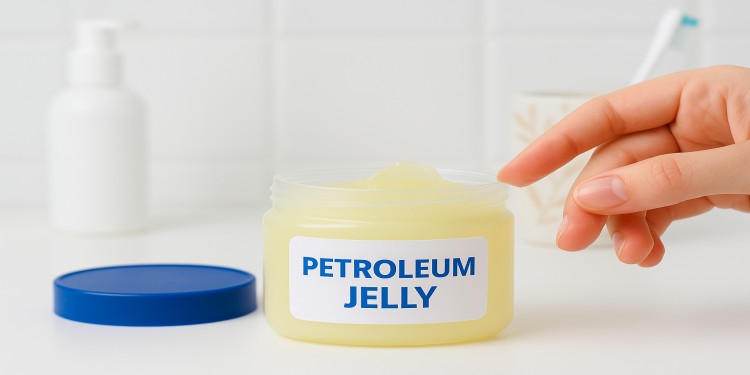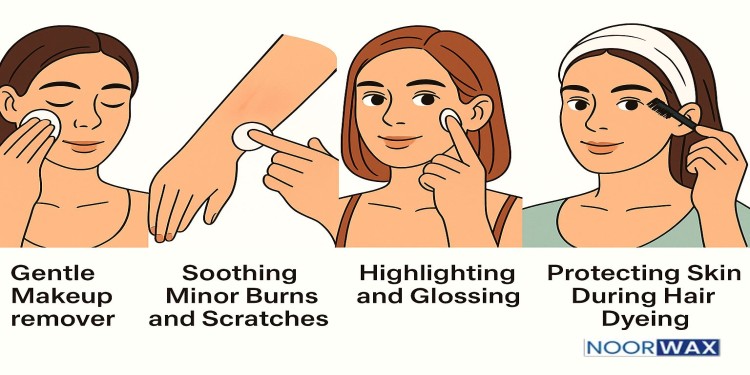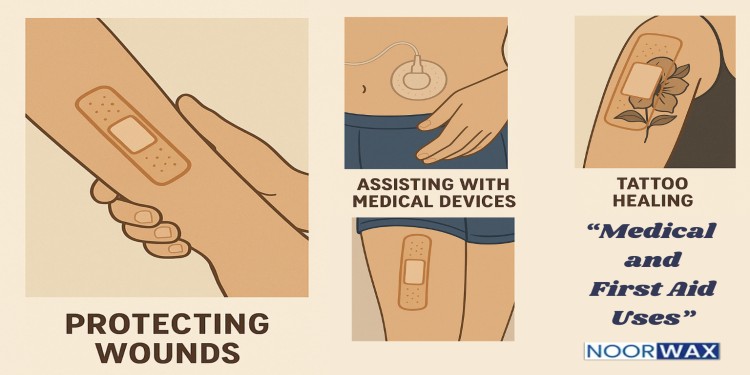Petroleum jelly — also known by popular brand names like Vaseline — is one of the most versatile and underrated products found in homes around the world. Developed in the 19th century, it has stood the test of time as a go-to solution for everything from dry skin to minor wounds to household fixes. Despite being simple in composition, petroleum jelly has countless practical uses that make it an essential item in both medicine cabinets and makeup drawers.
But what exactly is petroleum jelly, and how can you use it safely and effectively in your daily life? In this guide, we’ll explore its many uses, health benefits, beauty tricks, and even unexpected household applications.

What Is Petroleum Jelly?
Petroleum jelly is a semi-solid mixture derived from refining crude oil. It’s made primarily of mineral oils and waxes, forming a slick, greasy substance that
repels water and
seals in moisture. Because of its occlusive properties, it doesn’t get absorbed deeply into the skin but instead forms a protective barrier on the surface.
It’s important to note that
petroleum jelly used in cosmetics is highly refined and purified. It is considered safe by the FDA for external use and is found in many lotions, ointments, lip balms, and healing creams.
Common Everyday Uses of Petroleum Jelly
1.Moisture Lock for Dry Skin
Petroleum jelly is a
lifesaver for dry, cracked skin. It can be used on areas like the hands, elbows, heels, and lips to prevent moisture loss, especially in cold or dry climates. Apply it after a shower or handwashing to seal hydration into the skin.
2.Lip Protection
Chapped lips? A tiny dab of petroleum jelly can
soothe, soften, and protect them from further dryness. Many commercial lip balms use petroleum jelly as their base.
3.Diaper Rash Prevention
Parents have long relied on petroleum jelly to protect babies from
diaper rash. It creates a barrier between the baby’s skin and moisture from diapers, reducing irritation and inflammation.
4.Windburn and Cold Protection
For runners, skiers, or anyone exposed to the elements, petroleum jelly applied on cheeks or around the nose acts as a shield against windburn and dry, harsh air.
.jpg)
Skin Care and Beauty Benefits
1.Gentle Makeup Remover
Petroleum jelly is an effective, non-irritating option for removing makeup, especially waterproof mascara or eyeliner. Apply a small amount to a cotton pad, gently swipe across the skin, and rinse with warm water.
2.Soothing Minor Burns and Scratches
It doesn’t have healing properties by itself, but petroleum jelly keeps wounds moist, which accelerates healing. It's commonly used on minor burns, shallow cuts, and after dermatological procedures.
3.Highlighting and Glossing
Want a natural dewy glow? A dab of petroleum jelly on cheekbones or eyelids works as a skin-safe highlighter. You can also apply it over matte lipstick for an instant gloss finish.
4.Eyebrow and Hair Styling
Use a small amount to tame flyaways or shape eyebrows. It gives them a groomed look without stiffness.
5.Protecting Skin During Hair Dyeing
Before dyeing hair, apply petroleum jelly around your hairline and ears. It will prevent the dye from staining your skin.

Medical and First Aid Uses
Petroleum jelly has long been used in medical settings and first aid kits due to its protective and non-reactive properties.
- Protecting wounds: It helps keep minor cuts and scrapes from drying out, which may speed healing.
- Preventing chafing: Athletes often use it on thighs, underarms, and nipples to reduce friction.
- Assisting with medical devices: Petroleum jelly is sometimes used to lubricate thermometers, rectal thermometers, or catheters, under the guidance of a doctor.
- Tattoo healing: Many tattoo artists recommend petroleum jelly in the early healing stages to protect the fresh tattoo (though some now prefer specialized products).
Note: Always apply petroleum jelly to clean skin. Using it on dirty or infected wounds can trap bacteria and worsen infections.

Is Petroleum Jelly Safe?
Yes — for most people, petroleum jelly is
safe and non-toxic when used properly. Dermatologists frequently recommend it because it’s:
- Hypoallergenic
- Fragrance-free
- Non-comedogenic (does not clog pores)
However, there are a few safety tips to consider:
- Avoid use on acne-prone skin — It may cause breakouts in oily or sensitive areas.
- Do not use inside the nose or lungs — Inhaling small amounts over time can lead to lipoid pneumonia.
- Avoid deep wounds or surgical sites — It may block airflow to the skin or trap harmful bacteria.
Unexpected Household Uses of Petroleum Jelly
Petroleum jelly doesn’t just belong in the bathroom. It can be handy in household repairs and maintenance too:
- Loosen stuck zippers
- Silence squeaky door hinges
- Polish leather shoes or handbags
- Protect metal tools from rust
- Prevent battery terminal corrosion
- Make perfume last longer (Apply on pulse points before spraying perfume)
This multi-purpose product can save time and money across various areas of your home.
Myths and Misconceptions
Despite its popularity, petroleum jelly has its share of myths:
- Myth: Petroleum jelly clogs pores.
→ Fact: Cosmetic-grade petroleum jelly is non-comedogenic. It sits on top of the skin and doesn't penetrate pores.
- Myth: It moisturizes the skin.
→ Fact: It doesn’t add moisture but locks in existing moisture. That’s why it’s most effective when applied to damp skin.
- Myth: It causes cancer.
→ Fact: The petroleum jelly sold in stores is purified and approved by regulatory agencies like the FDA. It does not cause cancer.
When Not to Use Petroleum Jelly
While it’s highly versatile, there are some situations where you should avoid petroleum jelly:
- Inside the nose – Regular application can lead to rare but serious lung conditions.
- On fungal or bacterial infections – It can trap moisture and worsen the condition.
- As a sunscreen substitute – Petroleum jelly offers no protection against UV rays.
Always read labels and, when in doubt, consult a healthcare professional.
Final Thoughts
Petroleum jelly is a time-tested, science-backed product with a long list of practical uses. Whether you’re dealing with dry winter skin, treating a minor cut, grooming your eyebrows, or fixing a squeaky hinge, a small jar of petroleum jelly can go a long way.
Its affordability, availability, and multi-functional benefits make it a must-have in every household. Just remember to use it correctly — always on clean skin, and never on deep wounds or internally — and you’ll see why this simple product has been a trusted favorite for over a century.
FAQs About Petroleum Jelly
Q: Can I use petroleum jelly on my face every night?
A: Yes, especially if you have dry or sensitive skin. Apply it over a moisturizer to seal in hydration — but avoid using it on acne-prone areas.
Q: Is petroleum jelly safe for babies?
A: Yes. Pediatricians often recommend it to prevent diaper rash. Use a fragrance-free option and apply a thin layer.
Q: Can petroleum jelly be used on wounds?
A: It helps keep minor wounds moist to support healing. Always clean the area first and consult a doctor if it’s a deep or infected wound.
Q: Does petroleum jelly expire?
A: While it doesn’t spoil easily, check the expiration date and avoid using if the texture, color, or smell has changed.

.jpg)



send comments